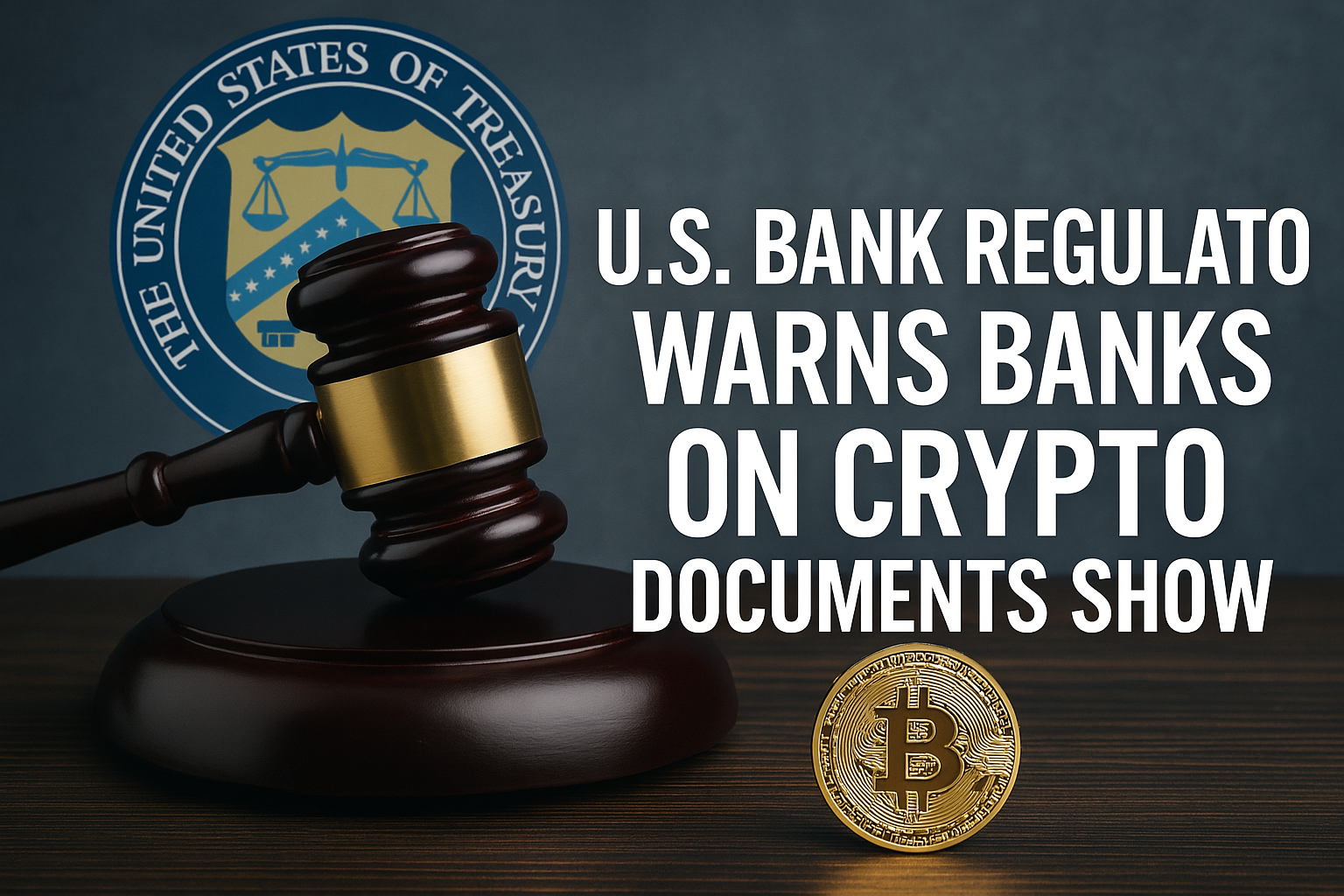U.S. bank regulator warns banks on crypto documents show: The debate surrounding cryptocurrency regulation has taken a pivotal turn, with recently unsealed court documents revealing how U.S. banking regulators approached the crypto sector. Contrary to claims from industry insiders about aggressive “debunking,” the records show that federal regulators merely cautioned banks rather than ordering them to cut ties with crypto clients entirely.
Background: The Coinbase Lawsuit and FDIC’s Letters
In a high-profile legal battle, crypto exchange Coinbase sued the Federal Deposit Insurance Corporation (FDIC) for access to supervisory letters sent to banks. Regulators often use these typically confidential documents to provide guidance or raise concerns to institutions. A federal judge ordered the FDIC to release redacted versions of 25 such letters, along with an internal 2022 memo.
What emerged was revealing: the FDIC never imposed a blanket ban on crypto-related banking services but instead urged banks to proceed with caution when engaging in certain crypto activities, especially those involving custody of crypto assets or direct investment.
A Closer Look at the FDIC’s Guidance
The documents clarified two critical distinctions:
Direct crypto engagement (e.g., holding cryptocurrency or facilitating crypto trading) is considered high-risk and requires intense scrutiny.
Providing banking services to crypto clients (like offering deposit accounts or loans) is acceptable, though regulators advised a cautious approach.
This separation is critical. It reflects the FDIC’s concern for financial stability and consumer protectionwithout entirely stifling the growing crypto sector.
Industry Reaction and Allegations of Debunking
Crypto firms, including Coinbase, interpreted the guidance as an indirect form of debanking. Their argument centres around the idea that repeated cautionary language from regulatory bodies like the FDIC, Federal Reserve, and Office of the Comptroller of the Currency (OCC) discouraged banks from serving crypto clients out of fear of regulatory backlash.
Paul Grewal, Coinbase’s Chief Legal Officer, stated that the redacted letters show a “coordinated effort” to freeze out crypto activities and called on Congress to investigate further. His comments reflect growing frustration within the crypto industry about what many see as unfair and ambiguous treatment by the federal government.
Regulators Push Back: It Was a “Warning,” Not a Ban
In response, the FDIC released an internal memo detailing the nuance behind their supervision. The memo reiterated that they intended to minimise systemic risks, not to crush innovation. FDIC Chairman Martin Gruenberg emphasised that while direct crypto involvement by banks poses risks, merely offering services to crypto clients does not warrant a regulatory blockade.
This distinction is pivotal. It suggests that federal regulators were balancing innovation with responsibility, especially following the crypto market turmoil, including the collapses of significant platforms like FTX and widespread scams.
Trump Administration and the Future of Crypto Regulation
Adding fuel to the fire, the timing of the document release is especially significant. Former President Donald Trump, now President-elect again, is expected to launch a crypto-friendly policy overhaul, possibly starting with an executive order that encourages regulators to ease their scrutiny.
The crypto industry views this as a potential turning point. With the backing of the executive branch, regulatory attitudes might shift toward fostering innovation and economic freedom rather than limiting access to traditional banking services.
Banking Perspective: Risk Management and Due Diligence
From the perspective of traditional financial institutions, risk management remains the cornerstone of their operations. The FDIC’s memo outlines best practices for evaluating crypto-related engagements. These include:
Understanding a client’s crypto business model
Assessing cybersecurity frameworks
Ensuring compliance with anti-money laundering (AML) laws
Monitoring exposure to volatile assets
Regulators did not penalize banks that followed these guidelines. Instead, they asked those who failed to perform adequate due diligence before entering into crypto ventures to pause and reassess.This cautious approach isn’t new. Regulators have historically applied similar principles when dealing with new financial products or emerging technologies.
Why the Confusion? Ambiguity in Language and Enforcement
One reason for the controversy is ambiguous language in regulatory letters. Phrases like “pause activity,” “refrain from expansion,” or “heightened scrutiny” lack a firm legal directive yet may be interpreted by compliance departments as strong disincentives.
This creates a chilling effect. Banks, wary of enforcement actions, may choose to sever ties with crypto clients voluntarily—even when not explicitly required to do so. Hence, there is a perception of a “coordinated effort” to freeze the industry.
Congressional Interest and Industry Advocacy
As the crypto industry pushes back, Congressional leaders are beginning to take notice. Lawmakers from both parties have shown interest in increasing transparency around banking supervision. Several committees are expected to review the FDIC documents and investigate whether any overreach occurred.
This momentum coincides with growing public support for decentralised finance and blockchain innovation. Advocacy groups are now urging Congress to establish clear regulatory frameworks to avoid stifling a sector that could drive the next wave of economic growth.
Implications for Crypto Startups and Investors
For crypto startups, the documents provide cautious optimism. While regulators remain wary of systemic risks, they are not inherently opposed to banks engaging with crypto firms—provided there are proper controls.
Investors, meanwhile, should monitor how this regulatory discourse evolves. A policy pivot under a new administration could boost market confidence, attract institutional interest, and restore some of the momentum lost during recent downturns.
Conclusion
Despite media portrayals of a regulatory crackdown, the documents reveal a more nuanced picture. The U.S. bank regulator warns banks on crypto documents show a supervisory effort grounded in risk mitigation, not a deliberate attempt to stifle innovation.
As the industry matures and political tides shift, the key will be finding a middle ground, one where regulatory oversight ensures safety without crushing potential. Whether that balance can be achieved remains to be seen, but the release of these documents is an essential step toward greater transparency.
For more insights into the evolving crypto landscape, check out this deep dive into community takeovers in crypto.
